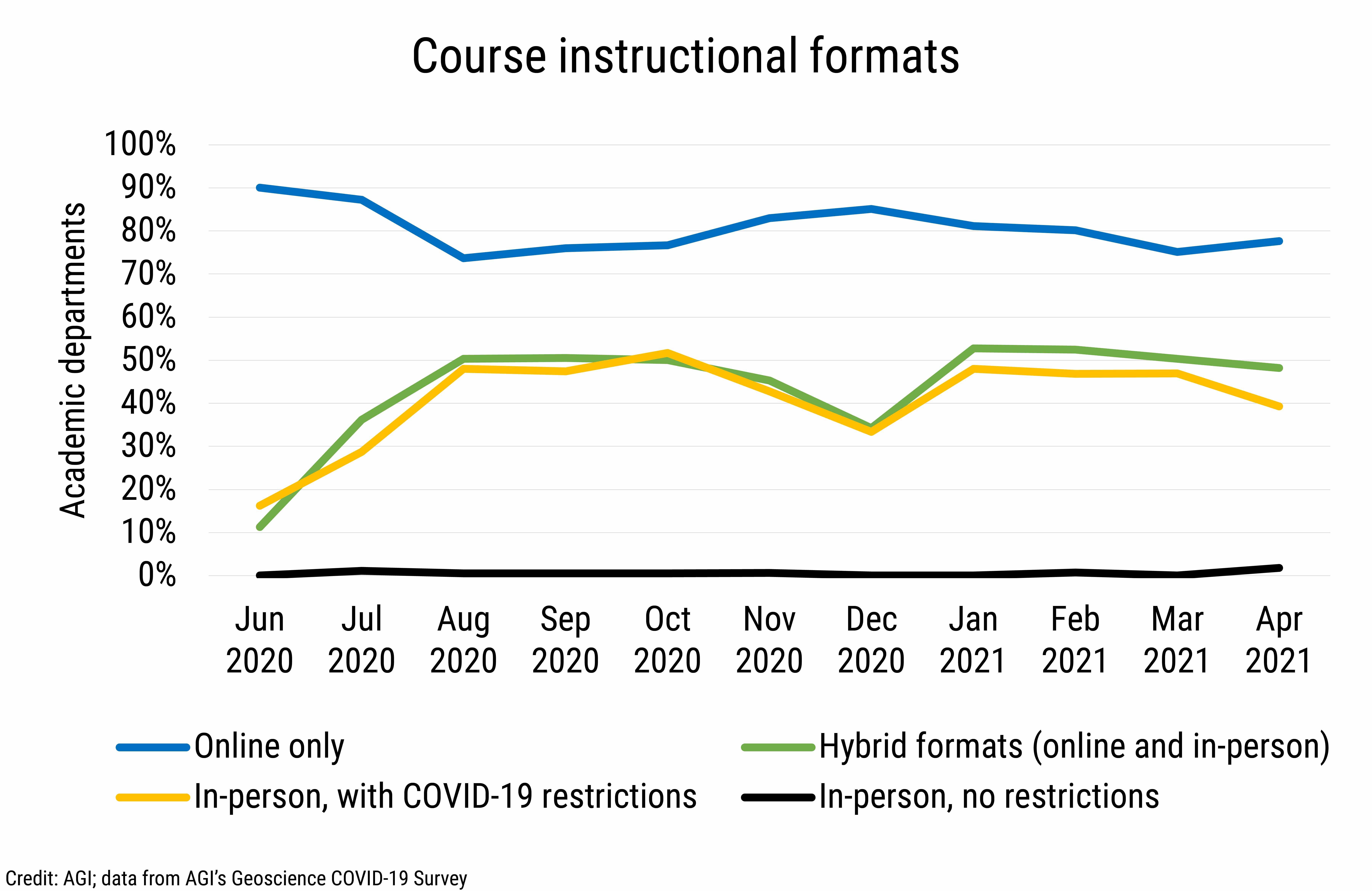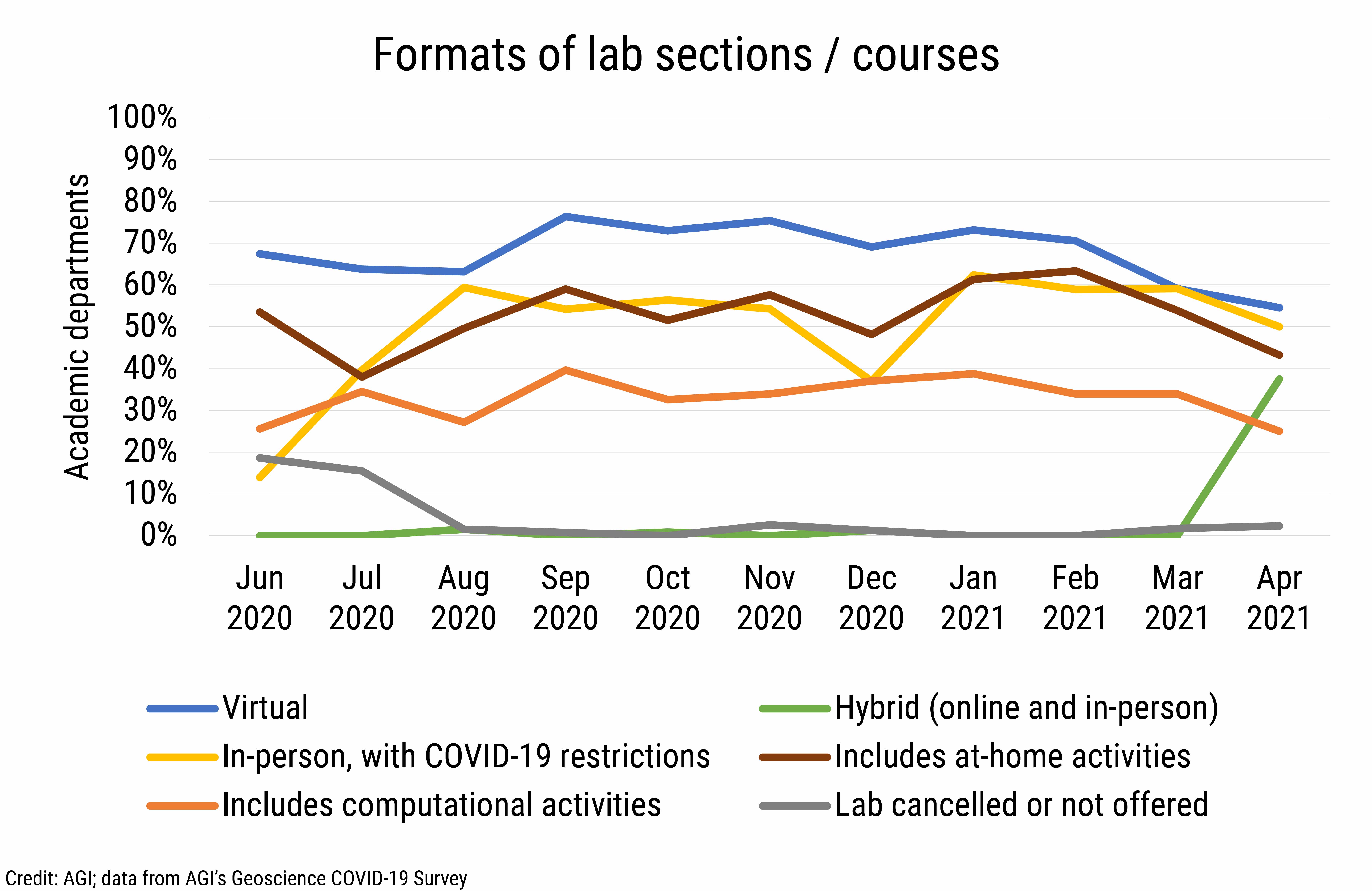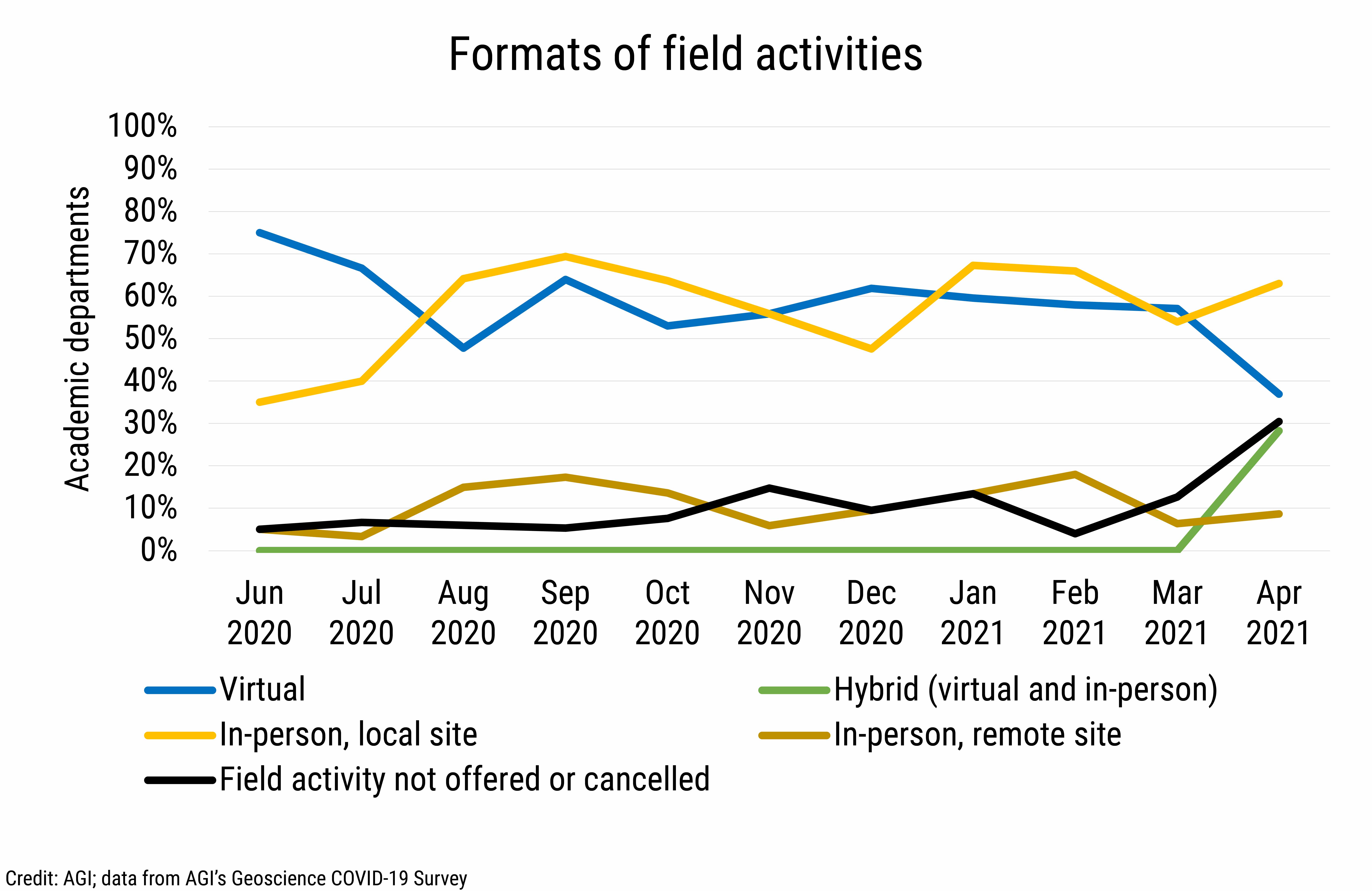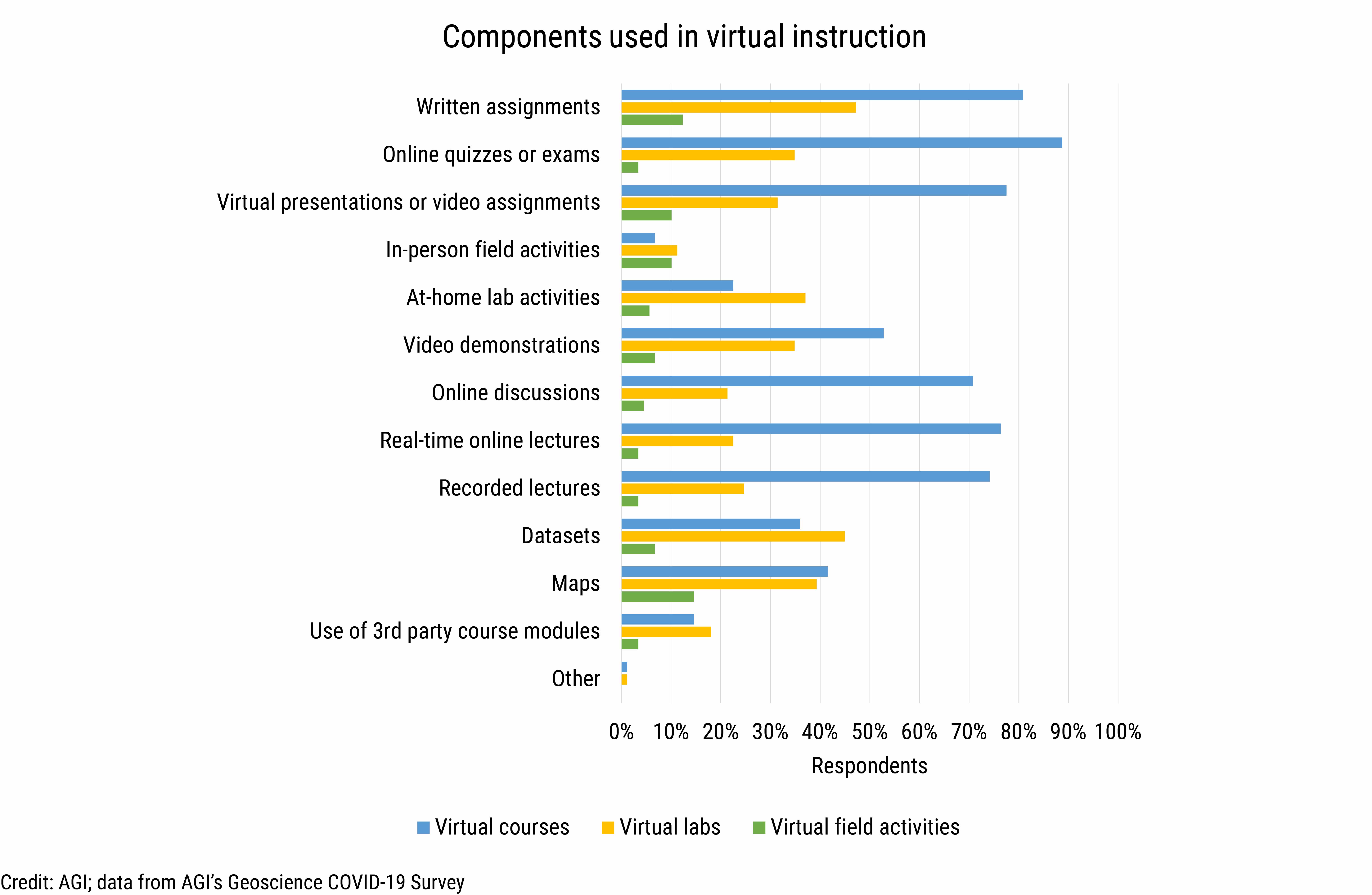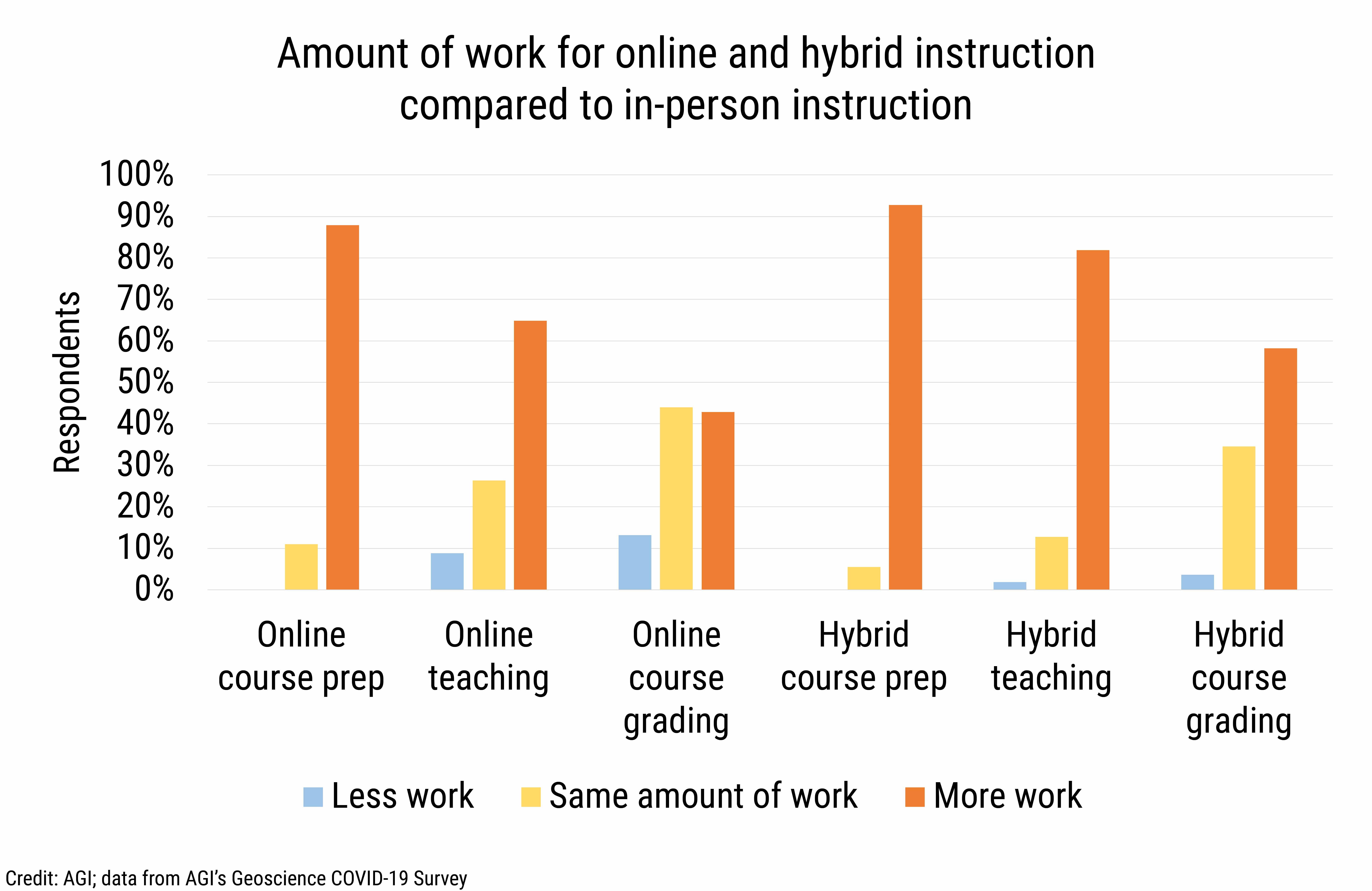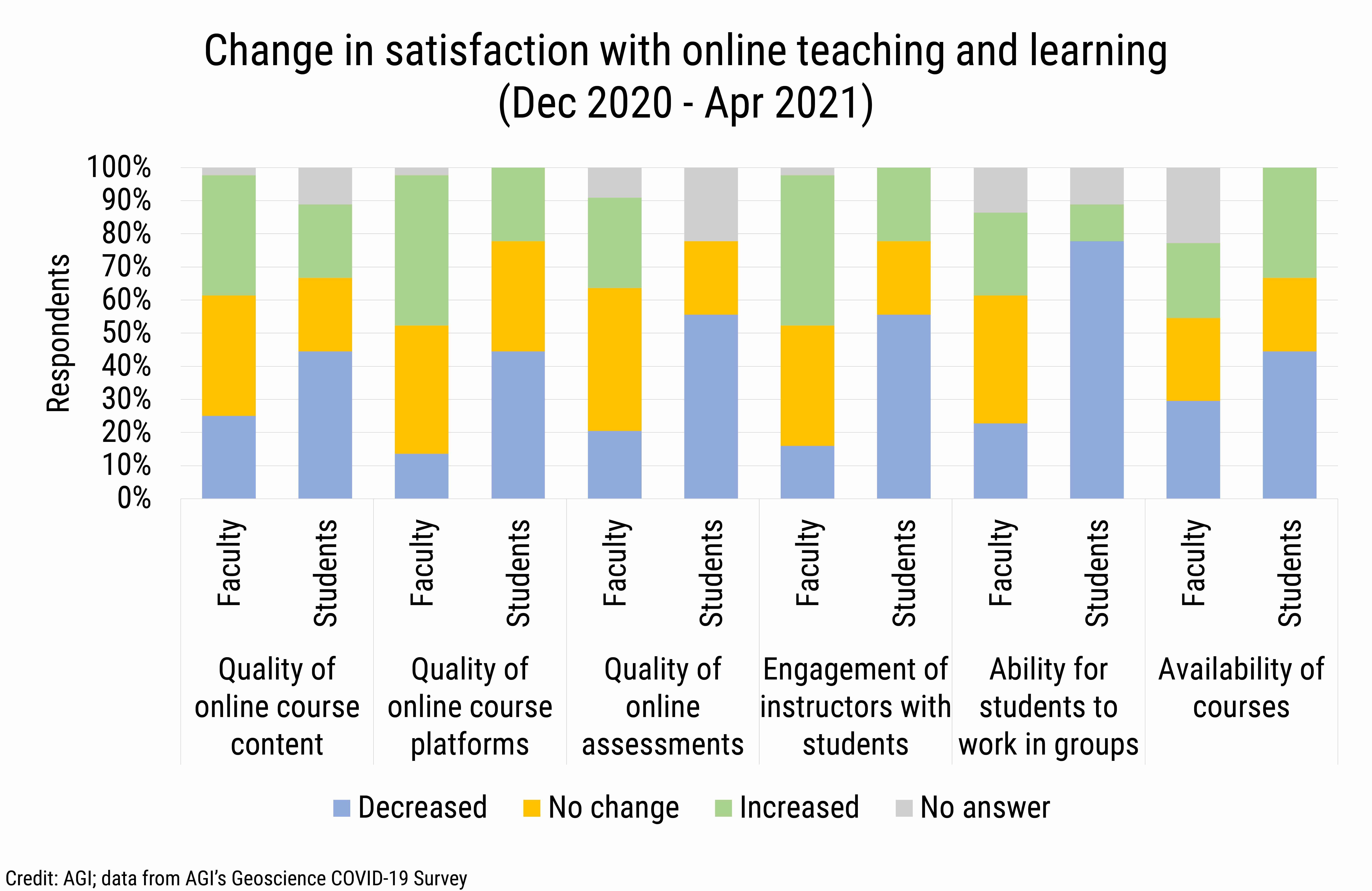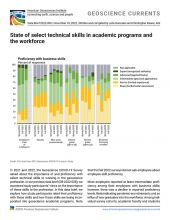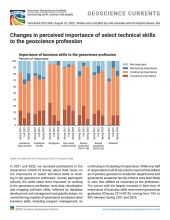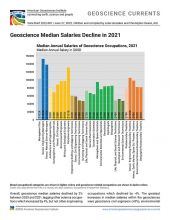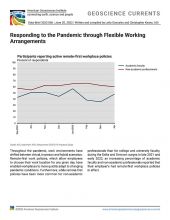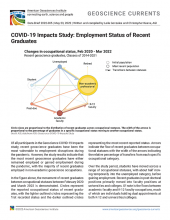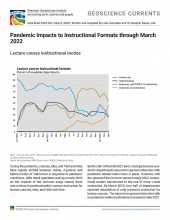This data brief provides an update on the changes in geoscience academic instructional environments as a result of the COVID-19 pandemic. We examine how instructional formats for courses, labs, and field activities have changed over the past year, what components are being used in virtual instruction, and the level of satisfaction that faculty and students have with online instruction.
Instructional formats
While institutions and departments are increasingly looking forward to resuming pre-pandemic in-person instruction by Fall 2021, nearly 80% of departments reported that courses continue to primarily be delivered via online formats. Nearly half of departments reported hybrid course formats and 40% of departments reported courses being conducted in-person with COVID-19 restrictions such as social distancing, masking, and limited class sizes.
Academic departments continue to use multiple modes of instruction for lab sections and courses, with virtual labs being the most common format offered. However, the percentage of departments offering virtual labs declined from 73% in January 2021 to 55% in April 2021. In-person labs conducted under COVID-19 restrictions has been the second common format of lab sections and courses, with half of departments offering mode of instruction in April 2021. The uptick in hybrid lab formats in April 2021 was due the addition of this answer option on the survey instrument during the April surveys. In addition, at-home activities were more commonly reported being included in labs than computational activities.
The most common formats for field instructional activities continue to be virtual formats and in-person instruction at local sites. In April 2021, we added options to our surveys to ascertain what percentage of departments were conducting field instruction in hybrid formats, as well as self-guided field activities at local sites, in addition to in-person instruction at local or remote sites. In April, there was also an uptick in the percentage of departments indicating that field activities were cancelled or not currently offered.
Changes to curriculum
82% of faculty made changes to the courses they taught this academic year. In addition to converting course content to online delivery, other changes included reducing the amount of content covered. In some cases, content was not suited for online delivery, and in other cases faculty mentioned that virtual instruction took much longer and so content had to be cut because the pace of instruction was much slower than in-person. Faculty also eliminated in-person activities, with much of this driven by COVID-19 restrictions. Other changes to curriculum included changing grading formats and options, which included extending deadlines for assignments, accepting late work without penalty, providing students with a pass/fail or satisfactory/unsatisfactory option for course grades, and changing the weighting on assignments and exams. While some faculty decreased the number of assignments and assessments and reduced the amount of active learning activities, other faculty increased these parts of their courses.
Components used in virtual instruction
In April 2021, we asked about the types of components faculty have employed in their virtual courses, labs and field activities they taught this academic year. Common components of virtual courses included written assignments, online assessments, virtual presentations or video assignments, synchronous online lectures, recorded lectures, online discussions, and video demonstrations. More than half of faculty reported using written assignments, online assessments, at-home lab activities, video demonstrations, datasets, and maps in their virtual labs. Maps were the most common component of virtual field activities, followed by written assignments.
Just over one-third of faculty reported that they have incorporated more math and programming skills in their virtual labs and / or field activities. Half of those faculty reported that their students were lacking the necessary math and/or programming skills for these activities. The most common issues reported by faculty were that students struggled with basic math problems and with using Excel to perform calculations and clean and manipulate data.
Faculty workloads with virtual instruction
Faculty reported that all aspects of hybrid and online instruction required more work than in-person teaching, with most faculty reporting that preparation for hybrid and online teaching was more work than for in-person teaching. Hybrid instruction was reported to require more work than online instruction across all categories (i.e., preparation, teaching, grading). Some faculty have commented that although the workload for preparing online instructional materials is substantial, in the long-term it would be less work to re-run the course, and also freed up time to work on developing new materials to tie into future versions of the course.
Satisfaction with online teaching and learning
Satisfaction with different aspects of online teaching and learning varied among students and faculty. Over half of faculty and students were moderately to extremely satisfied with the quality of online course content, with students being more satisfied than faculty, and approximately 60% of students and faculty were moderately to extremely satisfied with the quality of the online course platforms being used. In addition, 45% of both cohorts were moderately to extremely satisfied with the availability of courses.
Aspects of online instruction that faculty and students were least satisfied with included the ability for students to work in groups (16% faculty; 10% students expressing moderate to extreme satisfaction), quality of online assessments (35% faculty; 26% students expressing moderate to extreme satisfaction), and engagement of instructors with students (27% faculty; 45% students expressing moderate to extreme satisfaction).
Throughout this study, faculty have consistently commented on the lack of engagement they have had with students via online instruction, which has been exacerbated by students not turning on their camera during class and not actively engaging with the instructors. Some faculty have addressed this challenge by using small group breakout activities multiple times during classes to increase student engagement, and others have used the poll features on online platforms to assess concept comprehension throughout the course. Faculty have also found that by having students share their screen to discuss problem sets that they are working on helps other students in the class see different approaches for the problem at hand.
Between December 2020 and April 2021, there has been an increase in satisfaction levels for most aspects of online teaching by faculty, the exceptions being the ability for students to work in groups and availability of courses. Over the same period, students reported decreased levels of satisfaction with all aspects of online learning, with the largest declines related to the ability to work in groups.
Benefits and challenges with virtual instruction
The most common benefit to virtual instruction has been the accessibility of instructional materials to students. The flexibility of being able to join a class remotely and access prior lecture and course materials has been a boon for students who had schedule conflicts, were sick, or could not otherwise attend classes during their scheduled time. Faculty mentioned that with the use of pre-recorded lectures, they had re-configured class time to focus on discussions, group activities and more engaged learning activities with students. Others mentioned how the need to move courses to online instruction had improved and streamlined their teaching, with some using multiple technologies to provide students with more in-depth learning and others inviting guest lecturers from other institutions to present on course topics. Other benefits included the ability for students to review pre-recorded course lectures for studying and conducting labs in a way that students had more time to work on activities and gain better comprehension of the concepts presented.
The most common drawback to virtual instruction mentioned by participants was the difficulty engaging students during virtual instruction. Faculty also mentioned that there was no substitute for in-person learning especially in terms of lab and field activities where hands-on experience was critical for learning, and thus virtual instruction in these cases resulted in diminished returns on learning. Other drawbacks mentioned included the substantial preparation time for creating content for multiple instructional formats, lack of resources for creating virtual instructional materials, technology issues, and difficulty grading assignments.
We will continue to provide current snapshots on the impacts of COVID-19 on the geoscience enterprise throughout the year. For more information, and to participate in the study, please visit: www.americangeosciences.org/workforce/covid19
Funding for this project is provided by the National Science Foundation (Award #2029570). The results and interpretation of the survey are the views of the American Geosciences Institute and not those of the National Science Foundation.


